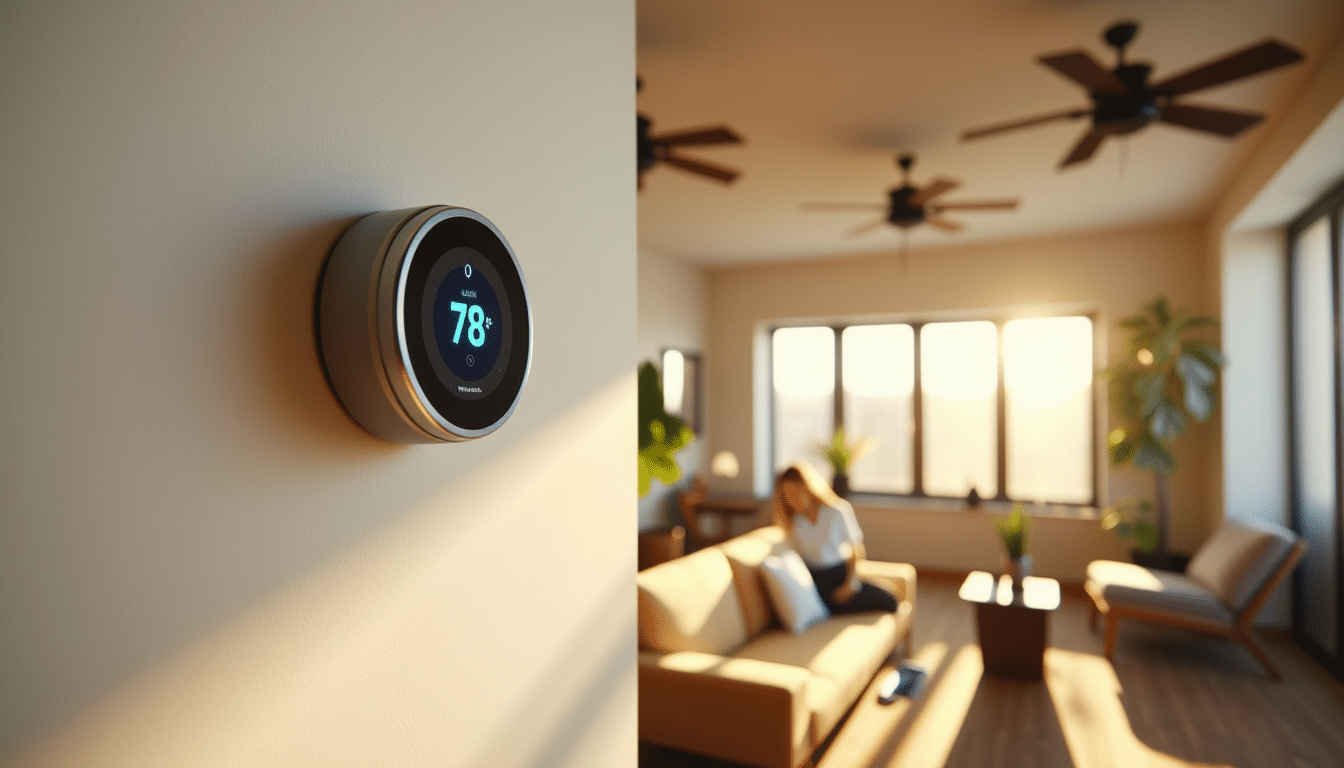Why timing your thermostat settings matters
Heating and cooling account for roughly half of the average household’s energy usage, and during the warmer months, it’s your air conditioning that does the heavy lifting. If you use your thermostat wisely, you can ease the load on your system, extend its lifespan, and cut back on how often it has to run – all without sacrificing comfort.
Rather than keeping your home at one static temperature all summer, it makes sense to adjust the settings depending on your schedule. This approach is especially important if you’re still working out of the house during the day, or if the house tends to empty out for long stretches at a time.
The sweet spot for daytime comfort
According to the U.S. Department of Energy – and this advice applies whether you’re in Preston or Pennsylvania – setting your thermostat at 78°F (about 25.5°C) when you’re home during the day offers a good balance. It’s cool enough to feel comfortable, but not so low that your air conditioner has to grind away non-stop.
If your home is well-insulated and doesn’t get a full blast of sun, you might even find you can go a bit higher without noticing much difference. Every degree you raise the thermostat above 25.5°C can save you on your energy bill, so it’s worth experimenting to see what works.
Turning it up when you’re out
Here’s where the real savings come in. If you’re out of the house for more than four hours, it’s smart to bump that thermostat up to 29-31°C (or 85-88°F). Your air con doesn’t need to keep an empty space chilled, and letting the temperature rise slightly reduces strain on the system and cuts your energy usage.
Of course, if you’ve got pets at home, you’ll want to account for their comfort too. It’s best not to let the temperature climb above 29°C (85°F) if you’ve got furry companions waiting for you at home.
When to adjust your thermostat
The timing of your adjustments matters just as much as the temperatures. Here’s a simple routine you can follow:
- Mornings – As people start getting out of bed and moving about, set your thermostat to 25.5°C (78°F). This gives you a comfortable start without overdoing the cooling.
- Mid-morning or when leaving the house – Before you head out for work or errands, raise the setting to 29-31°C (85-88°F). If you do this for about eight hours daily, reports suggest you could shave around 10% off your yearly cooling bill. That’s not something to be sniffed at.
- Evenings – Once you’re back at home and folks are settling down, bring the setting back to 78°F. You’ll stay comfortable through dinner, telly time, and into the evening.
- Before bed – Depending on how warm your home stays overnight, consider nudging the thermostat up again before you turn in. Most people sleep well in slightly warmer conditions, and if you’ve got decent airflow or a ceiling fan, you can easily manage without the AC running constantly through the night.
Use tech to make it easier
If you’ve already installed a smart thermostat, you’re one step ahead. These devices can be set to follow your schedule and even learn your habits over time, adjusting temperatures automatically to suit your routine. Worried about coming home to a sweltering living room? Set your thermostat to start cooling 30 minutes before you’re due back. That way, you walk into comfort without having had the system running pointlessly all day.
Programmable thermostats and smart thermostats are particularly helpful in older homes, where temperature regulation can be a bit more hit and miss. They offer better control without you needing to hover over the dial all day.
Steady wins the race
One thing to avoid is cranking the thermostat way down thinking it’ll cool the house faster. That’s a myth. Most air conditioners work at a single, consistent speed – so lowering it dramatically won’t cool any quicker, but it might overshoot and waste energy.
Final tip: make small adjustments and observe
Not every home responds the same way to thermostat tweaks. Start by implementing just a couple of temperature adjustments each day and see how your home reacts. You might discover that nudging things just a degree or two at key times makes a noticeable difference in both comfort and bills.
It’s a small shift in how you operate your thermostat, but one that pays off all summer long. Keep it consistent, and don’t be afraid to let your home warm up a bit when no one’s in – your energy bill will thank you.







